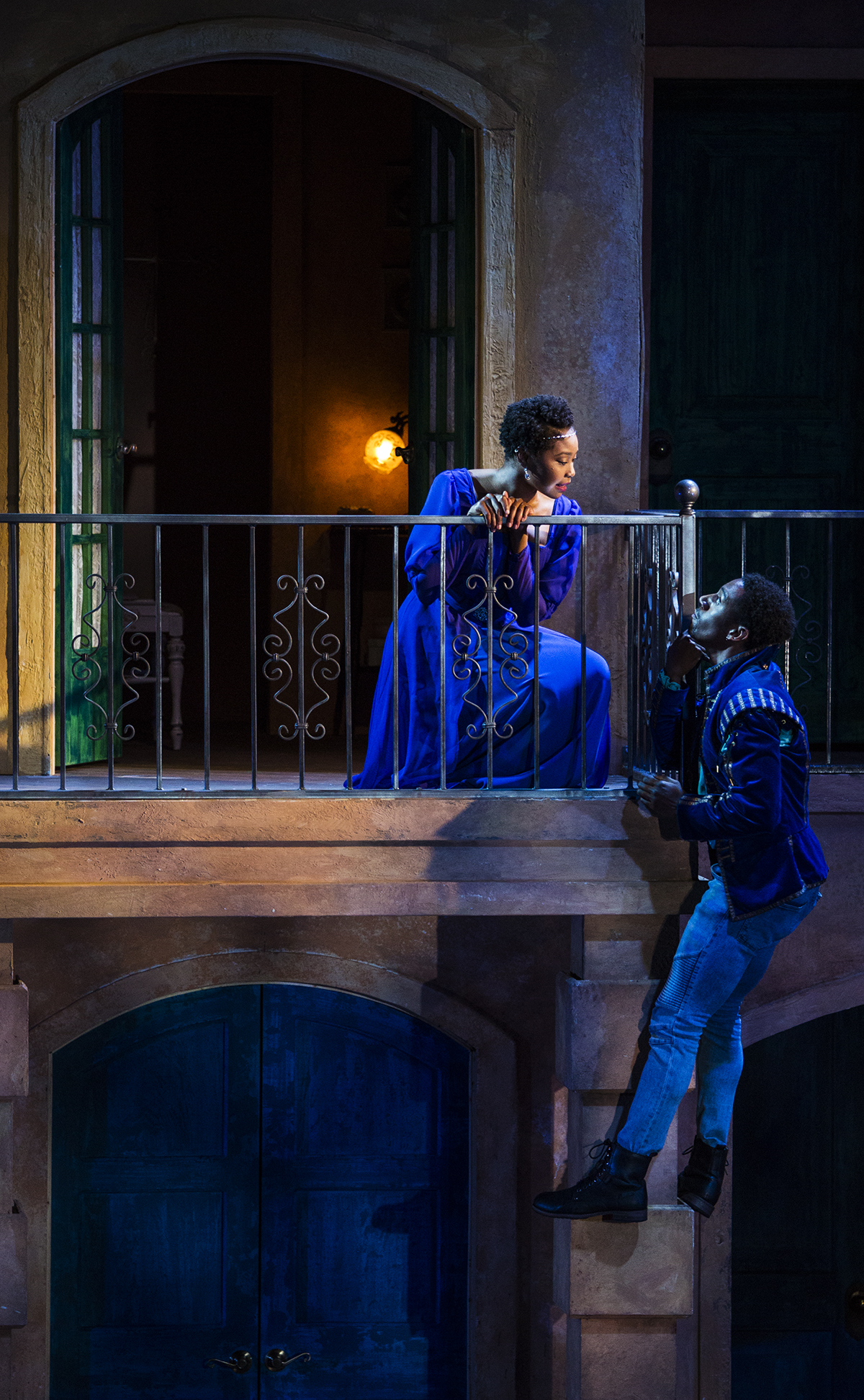The first time Chautauqua Theater Company conservatory actor Adrianna Mitchell saw a black woman in a Shakespeare play, she was 20.
“You know that it happens, but I just hadn’t seen it,” Mitchell said. “So for me to have this role, and to be a part of this process, and to tell this story, is really special.”
Mitchell will portray one half of the star-crossed lovers in CTC’s production of Romeo & Juliet, which opens this weekend and includes performances at 6 p.m. Saturday, and 2:15 and 8 p.m. Sunday in Bratton Theater.
It’s “a happy coincidence,” according to Mitchell and others in the cast and crew, that several main characters, including Romeo and Juliet, will be portrayed by people of color.
“I think there’s a traditional image that you have in your head when you think about Juliet and Romeo, and it can be something else, and it’s a perfectly valid interpretation,” Mitchell said.
The story remains the same, but audiences will see the kind of representation onstage that Mitchell missed out on as an aspiring actor. She is thankful younger viewers will be included — during the run, CTC and Chautauqua Institution are offering a special performance that is free and open to educational and community partners both on the grounds and off.
It’s only in recent years that actors of color have started getting more opportunities to portray leads in Shakespeare, according to both statistics and personal anecdotes.
In a 2015 interview published on the National Endowment for the Arts’ “Art Works Blog,” Sherri Young, executive director and founder of San Francisco’s African-American Shakespeare Company, said she noticed in the early ’90s that actors of color were playing iconic Shakespearean roles in drama school, but then weren’t getting those roles after graduation.
“I had just graduated from the American Conservatory of Theatre and, there was this big push to have more diversity on the stage,” Young told the NEA. “But what was happening was a lot of the theater companies, they were putting the bodies on the stage without really incorporating the culture as part of the production. So you would have a King Lear and it would be an Asian or African American and a Latino somewhere, but they weren’t playing the major roles, and it was still a very European production.”

Across the pond, back on Shakespeare’s home turf, the statistics are similarly “embarrassing,” according to a 2016 article in the Independent:
“The British Black and Asian Shakespeare Performance Database — using information from almost 1,200 productions over the past 75 years — reveals that while the Bard’s plays have become more multicultural over the decades, BAME actors have had scant opportunities to play the great Shakespearean leads,” according to the article, which also notes black, Asian and minority ethnic actors are “more likely to play Laertes, Ophelia, Horatio, Guildenstern or Rosencrantz than the title role in Hamlet.”
Romeo & Juliet director Dawn Monique Williams — who comes to CTC from Oregon Shakespeare Festival, where there is a focus on inclusivity — said she didn’t approach the play with any preconceived notions “about who should play these characters, in terms of race, ethnicity and, in most cases, gender.”
Benvolio, who acts as a narrator and is the first character audiences see in the show, is one case where Williams flipped the gender. CTC conservatory actor Jules Latimer portrays Benvolio as a female character, and the production suggests her character is coping with some unrequited love herself.
As someone who hadn’t done Romeo & Juliet before, Latimer said she was surprised how much fun she was having in rehearsal. As one of the “three amigos” — her term for the friendship of Romeo, Benvolio and Mercutio — much of her early stage time is made up of buddy scenes.
“Once you see it, it’s like, ‘Wow, I never knew that it was this funny,’ ” Latimer said. “It’s really funny, and I thought it was all sappy, sappy, lovey-dovey stuff, but it’s very funny and it’s very relatable.”
While Williams thinks the term “colorblind casting” is a misnomer, she did want as inclusive a cast as possible. She gave credit to CTC Artistic Director Andrew Borba for building a strong conservatory with actors offering a range of skills and backgrounds.
Williams recalled viewing Mitchell’s audition tape and being impressed with how the potential Juliet lit up the screen. Meanwhile, CTC conservatory actor Siddiq Saunderson brought a “street smart, savvy kind of energy” that Williams saw as a departure from one-dimensional, overly emotional Romeos, Williams said.
“Adrianna and Siddiq really just rose to the top, so it wasn’t intentional on my part in any way to say Romeo and Juliet will be played by black actors — that just happened through the course of video and callbacks,” Williams said.
Saunderson, who started acting in abridged Shakespeare plays during his middle school years, is thrilled to finally be playing “arguably one of the best roles ever written.”
“I do feel like it’s very important for black people to be doing Shakespeare,” Saunderson said. “I feel like the reason why Shakespeare has lasted for so long is because he has written these plays about these universal themes and things that all types of people that look differently can relate to.”
That said, Saunderson said he isn’t looking for the audience to receive a certain message.
“I don’t know if there’s anything necessarily that I want the audience to leave with,” Saunderson said. “I just want them to have taken the journey with me because the play is a journey. It’s happy, it’s exciting, it’s fun, it’s loving.”





